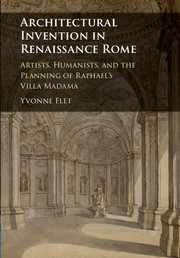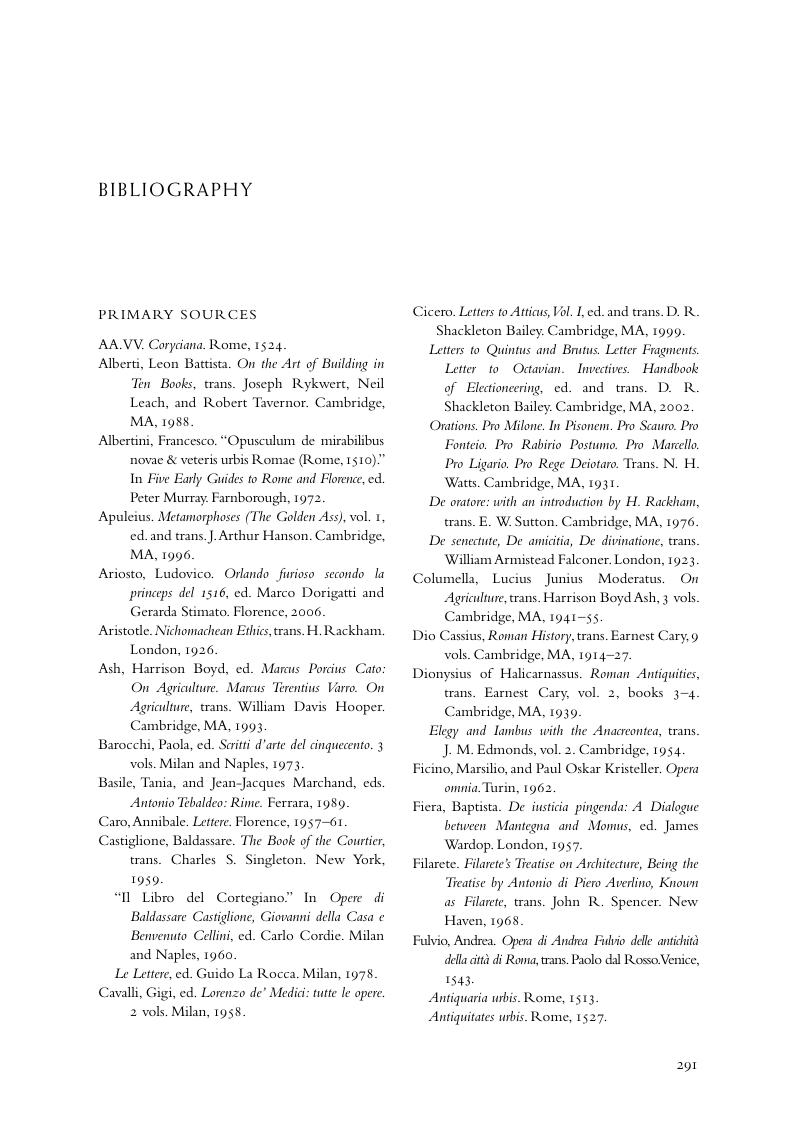 Architectural Invention in Renaissance Rome
Architectural Invention in Renaissance Rome Book contents
- Frontmatter
- Dedication
- Contents
- List of Plates
- List of Figures
- Preface and Acknowledgments
- Note on Translations and Abbreviations
- Introduction: The Nature of Invention, in Word and Image
- 1 Reviving the Corpse
- 2 Writing Architecture
- 3 Sperulo's Vision
- 4 Encomia of the Unbuilt
- 5 Metastructures of Word and Image
- 6 Dynamic Design
- Conclusion: Building With Mortar and Verse
- APPENDIX I Francesco Sperulo, Villa Iulia Medica versibus fabricata/ The Villa Giulia Medicea Constructed in Verse: critical edition and translation by Nicoletta Marcelli and gloss by the Author
- APPENDIX II Francesco Sperulo, Villa Iulia Medica versibus fabricata: Analysis of the presentation manuscript
- APPENDIX III Francesco Sperulo, Ad Leonem X de sua clementia elegia xviiii
- Notes
- Bibliography
- Index
- References
Bibliography
Published online by Cambridge University Press: 06 January 2018
- Frontmatter
- Dedication
- Contents
- List of Plates
- List of Figures
- Preface and Acknowledgments
- Note on Translations and Abbreviations
- Introduction: The Nature of Invention, in Word and Image
- 1 Reviving the Corpse
- 2 Writing Architecture
- 3 Sperulo's Vision
- 4 Encomia of the Unbuilt
- 5 Metastructures of Word and Image
- 6 Dynamic Design
- Conclusion: Building With Mortar and Verse
- APPENDIX I Francesco Sperulo, Villa Iulia Medica versibus fabricata/ The Villa Giulia Medicea Constructed in Verse: critical edition and translation by Nicoletta Marcelli and gloss by the Author
- APPENDIX II Francesco Sperulo, Villa Iulia Medica versibus fabricata: Analysis of the presentation manuscript
- APPENDIX III Francesco Sperulo, Ad Leonem X de sua clementia elegia xviiii
- Notes
- Bibliography
- Index
- References
Summary

- Type
- Chapter
- Information
- Architectural Invention in Renaissance RomeArtists, Humanists, and the Planning of Raphael's Villa Madama, pp. 291 - 319Publisher: Cambridge University PressPrint publication year: 2018


